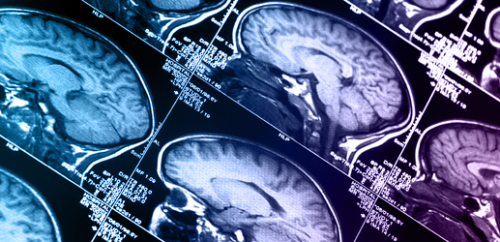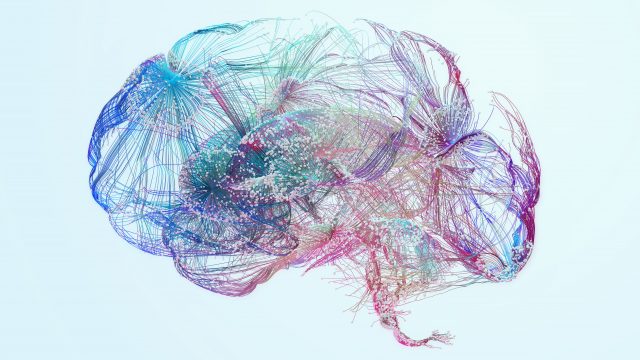New device stimulates the brain to prevent seizures
At Toronto’s University Health Network – one of more than 25 organizations involved in the pan-Ontario Epilepsy Discovery Project – researchers are developing a wireless, implantable device that can predict and prevent seizures.
The device is a tiny computer surgically implanted on top of the brain, where it can detect the onset of abnormal brain activity and send electrical impulses that stimulate the brain to stop a seizure from happening.
It’s just one way the Epilepsy Discovery Project can improve the lives of epilepsy patients. The project includes epilepsy researchers from across Ontario, nearly 30 research initiatives and more than two-dozen academic, health care, advocacy and industry organizations. Initiatives under the project range widely in their subject matter, from diagnosis and epidemiology to drug therapy, diet, imaging, surgery, brain stimulation and genetics.
The Epilepsy Discovery Project is one of OBI’s integrated discovery (ID) programs. They are all designed to create a seamless network of collaboration among patients, caregivers, clinicians, clinical researchers, basic scientists, charities and industry across Ontario to accelerate our understanding of brain disorders that have a significant impact on our society.
It’s important to understand that the ID programs represent an entirely new model of research, bringing together people with shared expertise, experience or interest to explore some of Ontario’s most pressing health challenges. Currently, more than 85 organizations are involved, from centres across Ontario. Learn more about our ID programs.
At the core of the ID program structure is the Brain Centre for Ontario Data Exploration (Brain-CODE), a cutting-edge, informatics-based platform that will collect and store data from every OBI project. Brain-CODE will allow researchers and clinicians to explore important clinical trends and opportunities for brain disease prevention over time. Learn more about Brain-CODE.
“We’ve always had the ideas,” says McIntyre Burnham, director of the University of Toronto Epilepsy Research Program and co-lead on the OBI Epilepsy Discovery Project. “But until now we haven’t had the platform to bring together researchers and resources to tackle the biggest issues and priorities around epilepsy. We’re collaborating in a way we never have before, not just with our fellow researchers and clinicians, but with our counterparts in industry. That in itself will accelerate discoveries and improve the health of thousands of Ontarians.”
Epilepsy is a condition in which bursts of electrical activity in the brain cause muscle spasms and lapses in consciousness, called seizures. Epilepsy affects 300,000 people in Canada and 50 million people worldwide. More than 30 per cent of people with epilepsy do not respond to medication, and for them seizures can be lifelong, life-limiting and even life-threatening. As many as one in every 100 people with frequent epileptic seizures that are poorly controlled by medication die from sudden unexpected death in epilepsy (SUDEP).
“In the past, the only real solution for drug-resistant epilepsy patients was surgery to remove the affected part of the brain,” says Peter Carlen, a senior scientist with the Division of Fundamental Neurobiology at the Toronto Western Research Institute and the lead on the wireless brain stimulation device initiative. “Removing part of the brain comes with complications, sometimes even a loss of function. Our device could change all of that. We’re creating a new way to prevent seizures that is less invasive, less recovery intensive, and in synch with the type of life we know epilepsy patients want to live.”
Brain stimulation has been used to treat other neurological diseases, such as Parkinson’s disease and depression. But the devices used have been a quality of life issue for patients because they’re wired to cumbersome batteries and require continuous stimulation of the brain. The Carlen group’s device is the first of its kind to be entirely wireless and responsive to brain activity only at the time of a seizure. The new design will give epilepsy patients more opportunity for an active life.
The device is also being matched with other types of cutting-edge research, such as imaging to pinpoint the exact location of a brain abnormality and research into brain patterns that predict seizure activity. While still in the early stages of development, the device should be ready for human use within three to four years.
Tamzin Jeffs, who lives with epilepsy herself, is the co-founder of SUDEP Aware, an organization that aims to promote knowledge and understanding of SUDEP through education, research and support for affected families. Jeffs’ sister was only 32 years old when she died suddenly from epilepsy, nearly 20 years after her initial diagnosis.
“The best way to reduce the risk of death from epilepsy is to have as few seizures as possible,” says Jeffs. “We promote regular appointments with a health-care provider, taking seizure medications regularly and reliably, and learning to identify and avoid seizure triggers. We also advocate for exploring other epilepsy treatments, when medications aren’t enough. A device that’s capable of reducing seizures may not prevent all cases of SUDEP, but it should help reduce the risk, and this can bring some comfort to people with epilepsy and their caregivers.”
“We’re finally looking at epilepsy from every angle,” says Jorge Burneo, an epileptologist at London Health Sciences Centre and Burnham’s co-lead on the OBI Epilepsy Discovery Project. “It’s about putting our heads and our expertise together to answer the questions we can’t answer through individual research projects. This is a really exciting time for epilepsy patients in Ontario.”
OBI is seeking ongoing partnership and support for Ontario’s brain researchers and patients.


